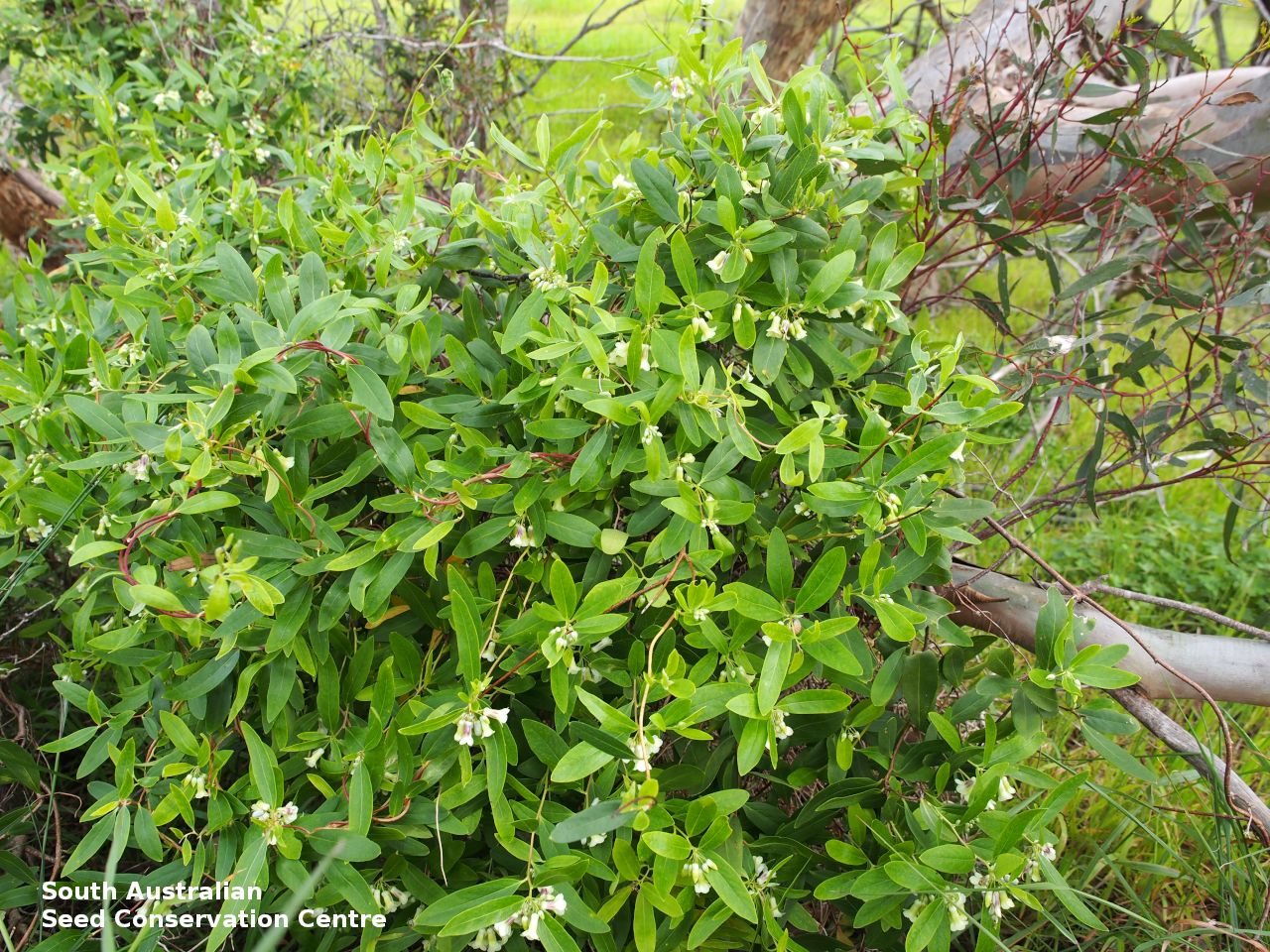
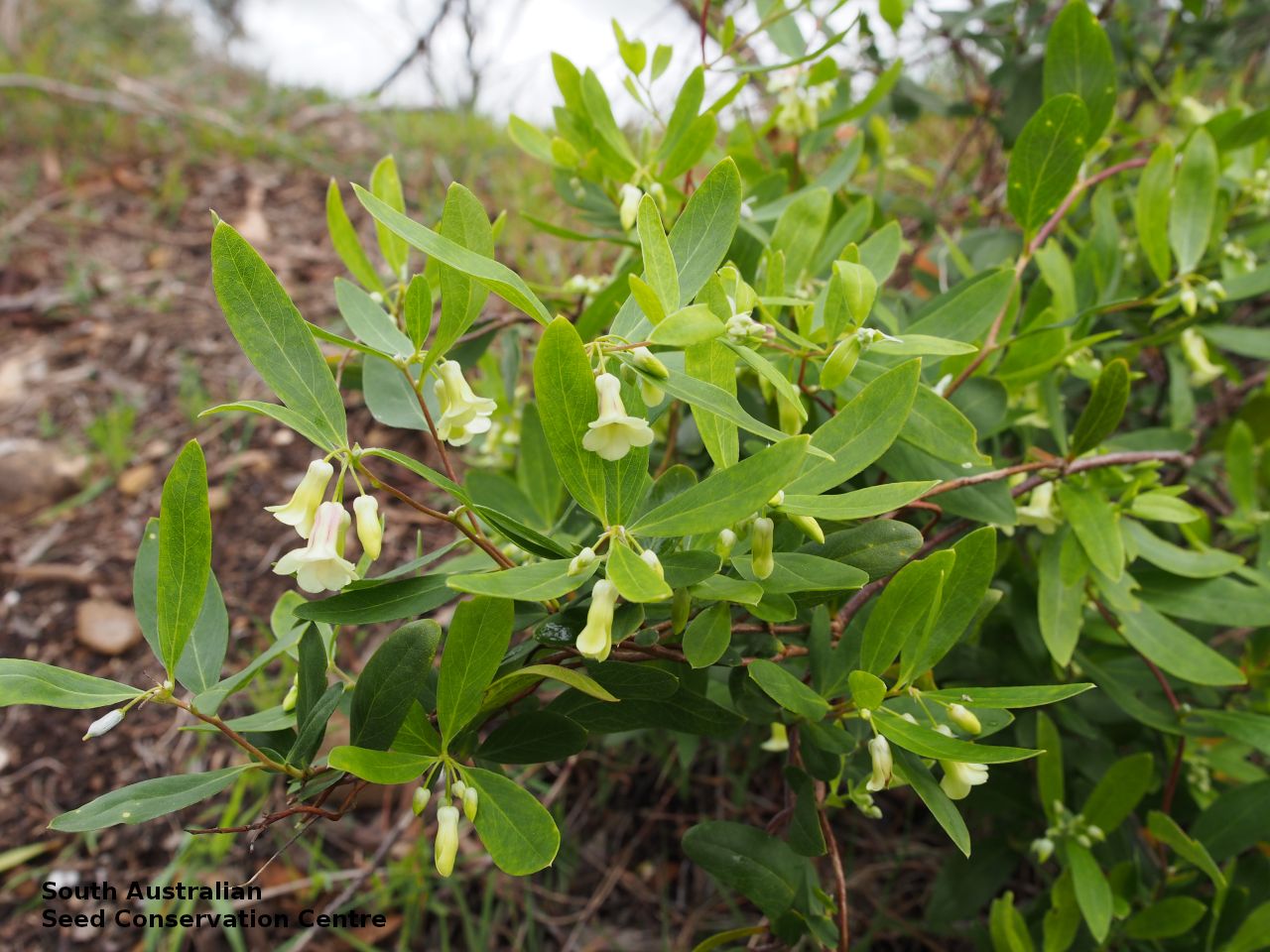
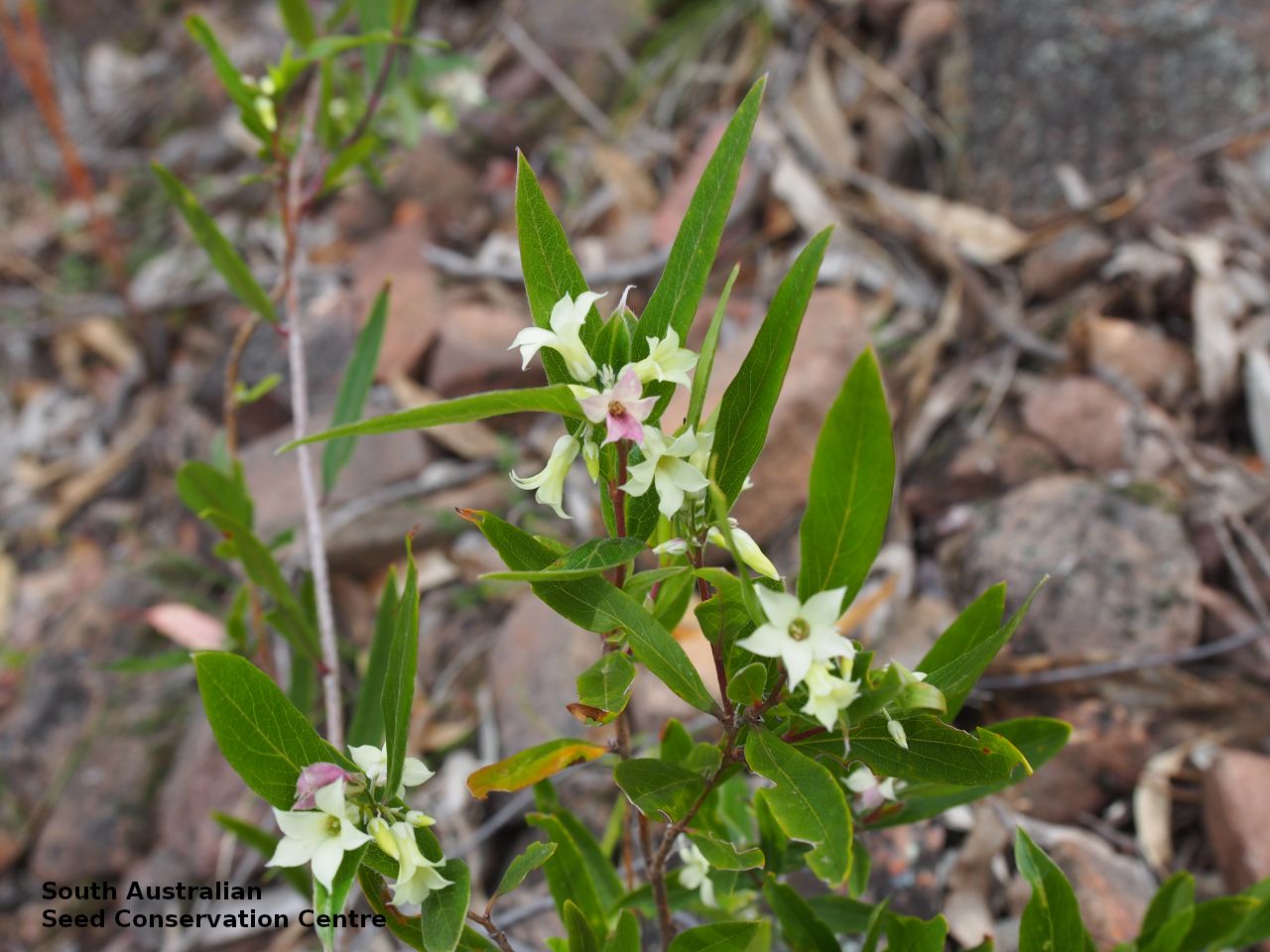
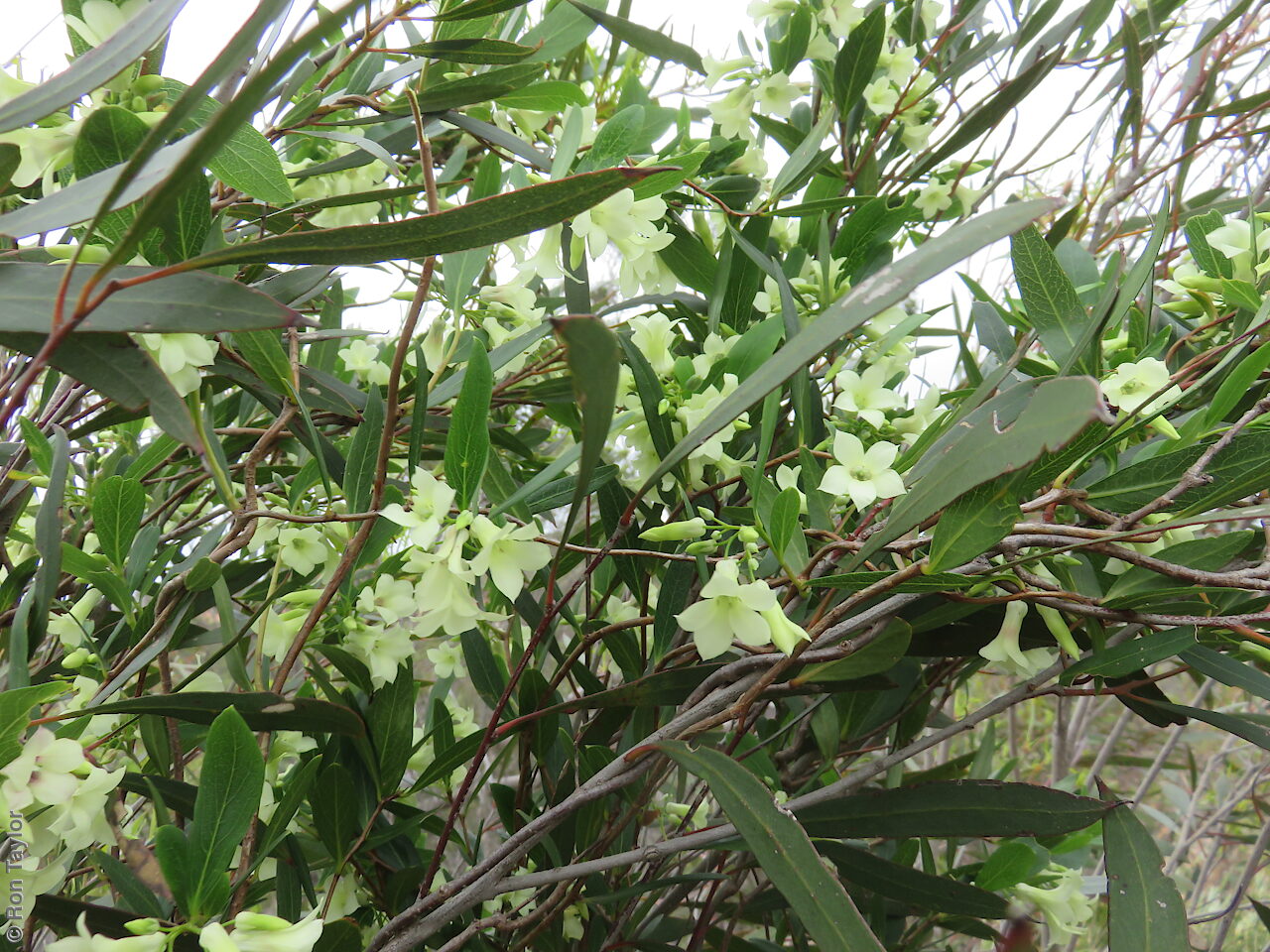
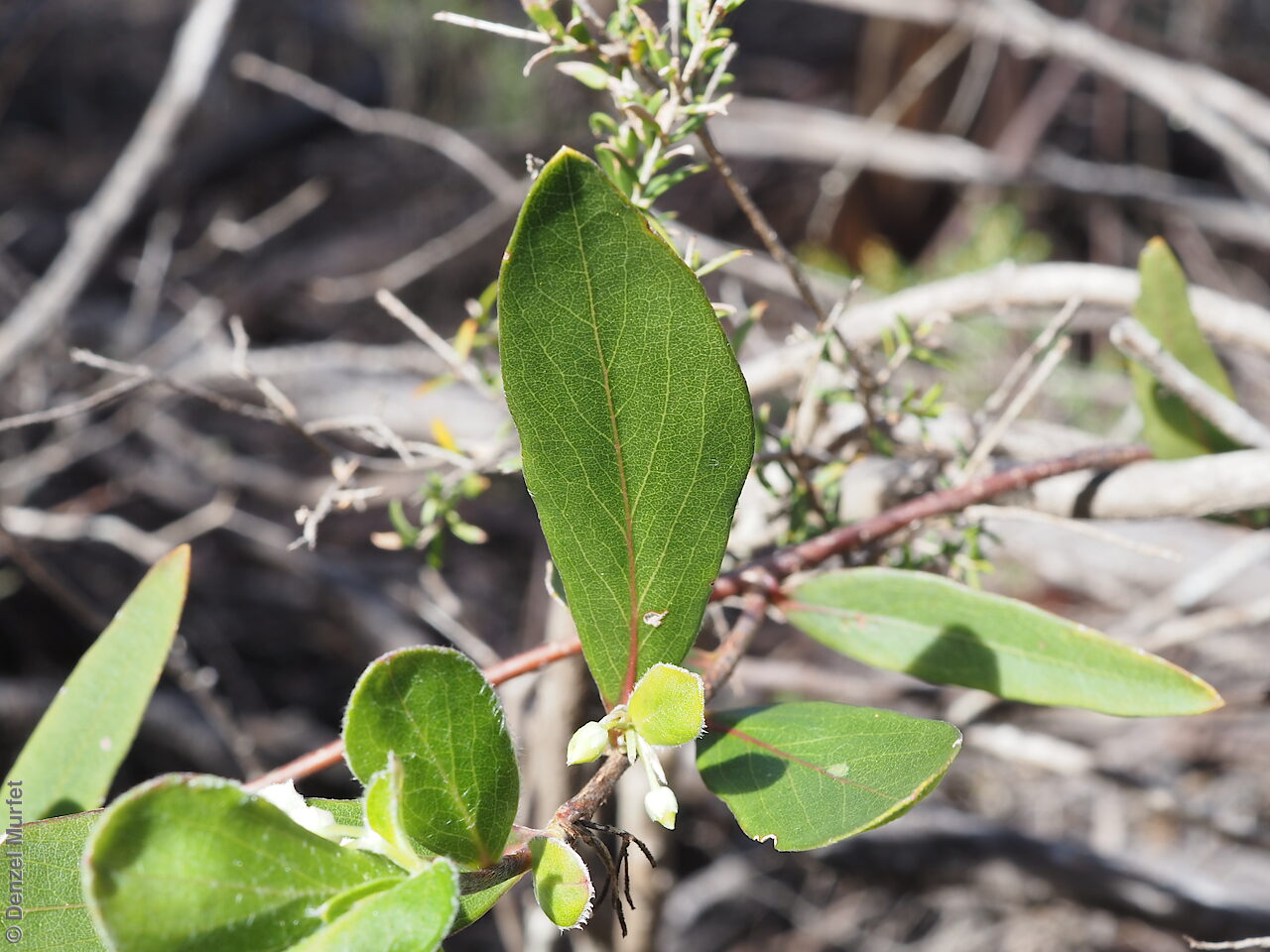
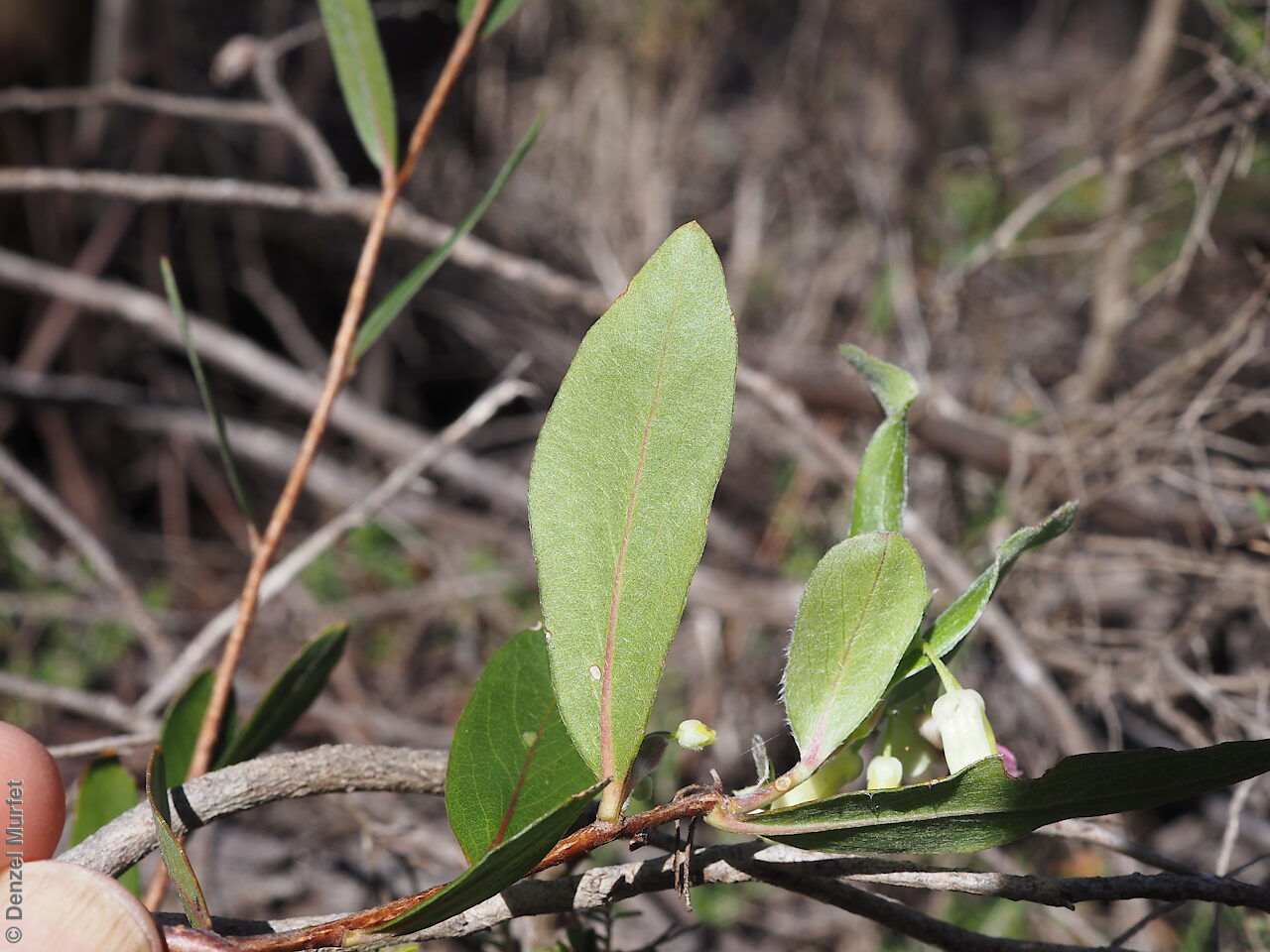
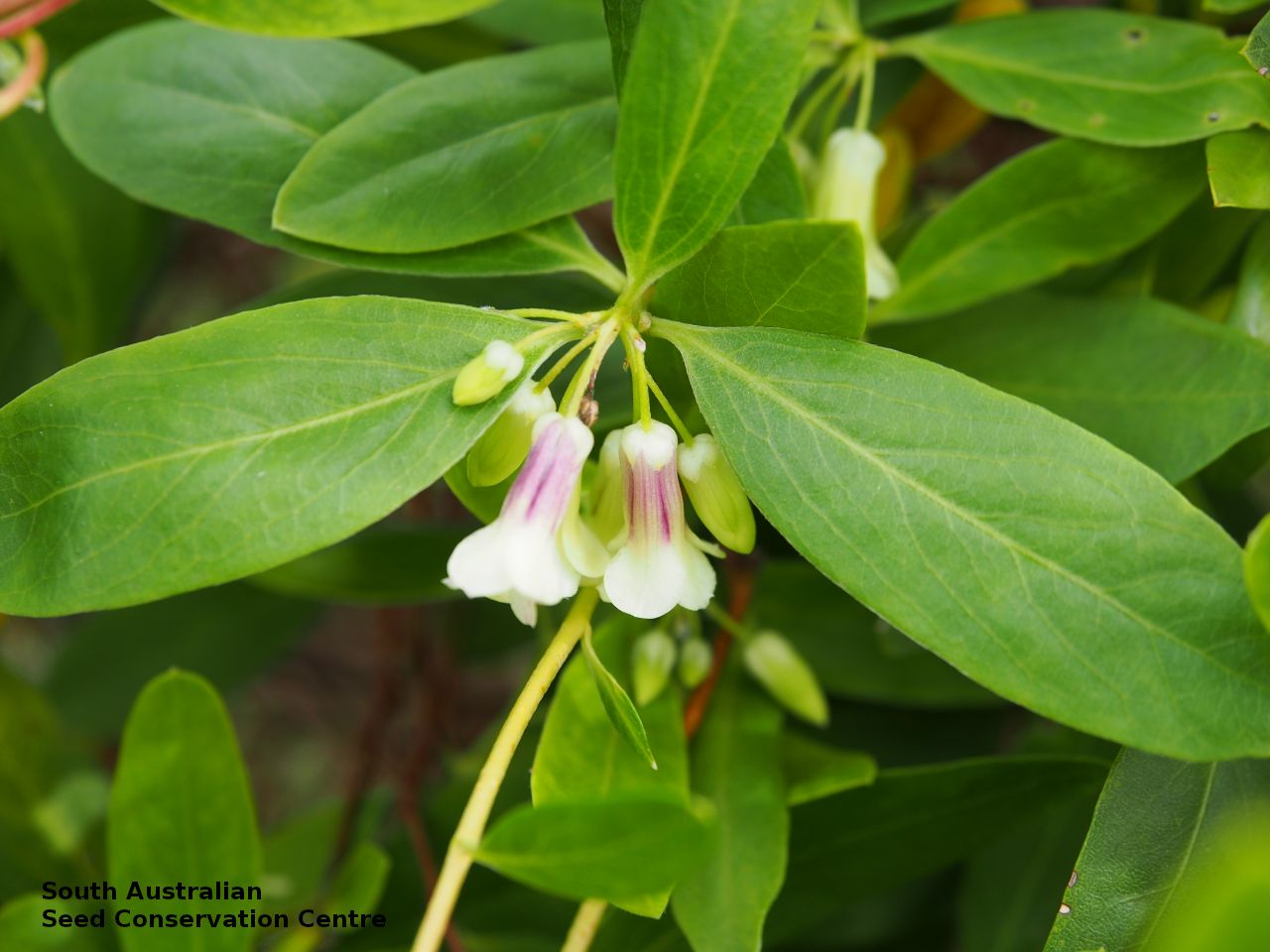
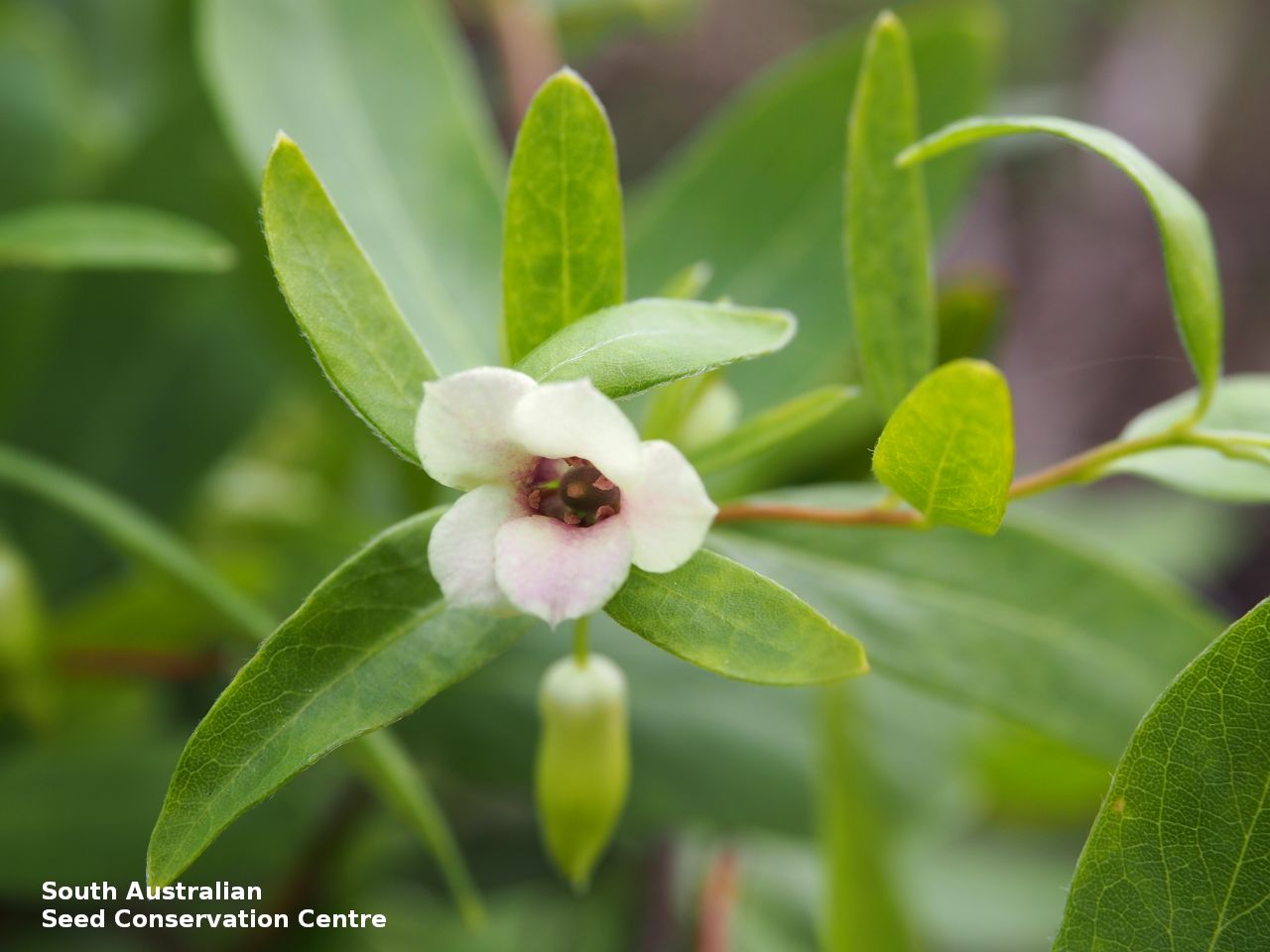
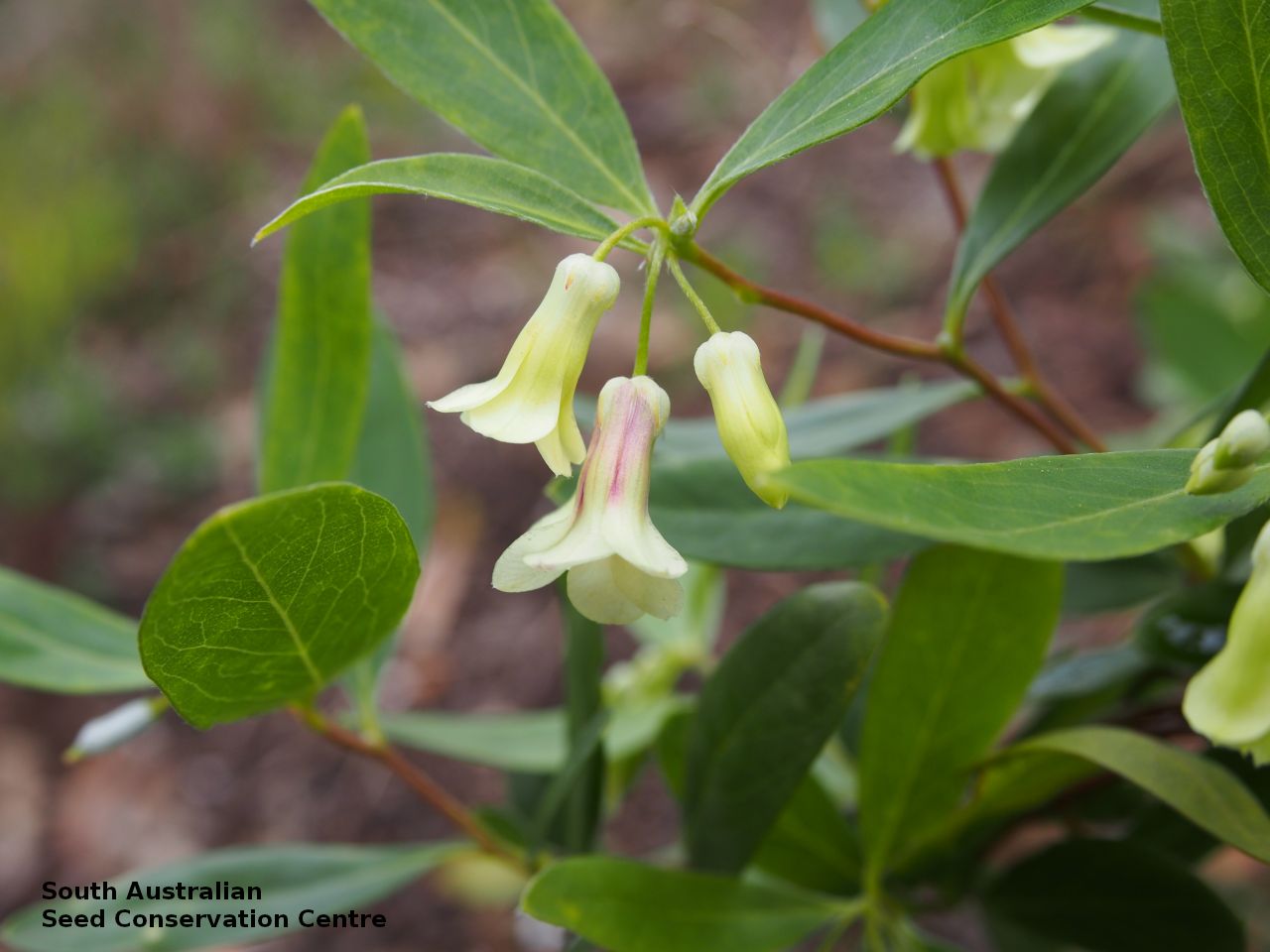
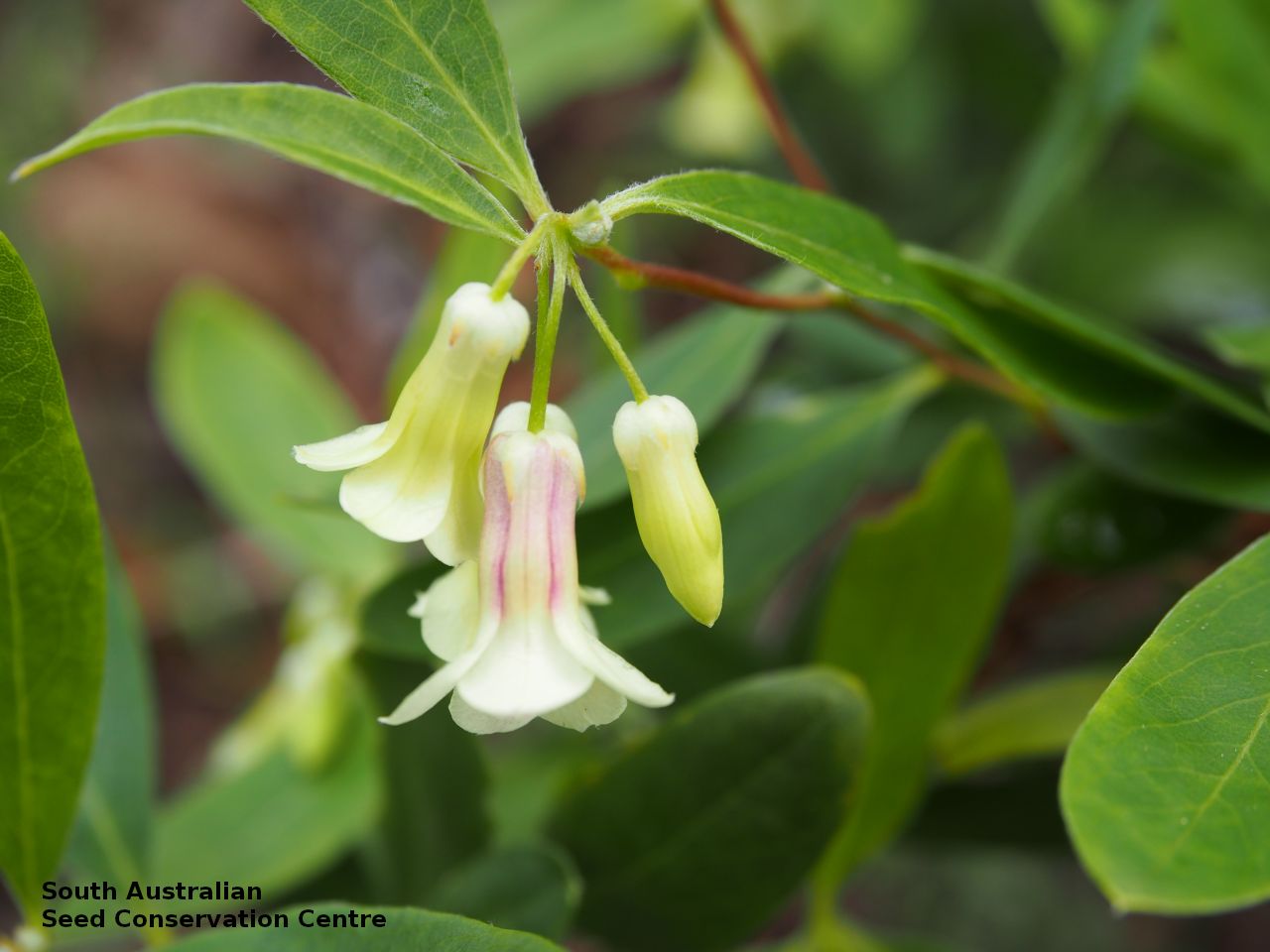
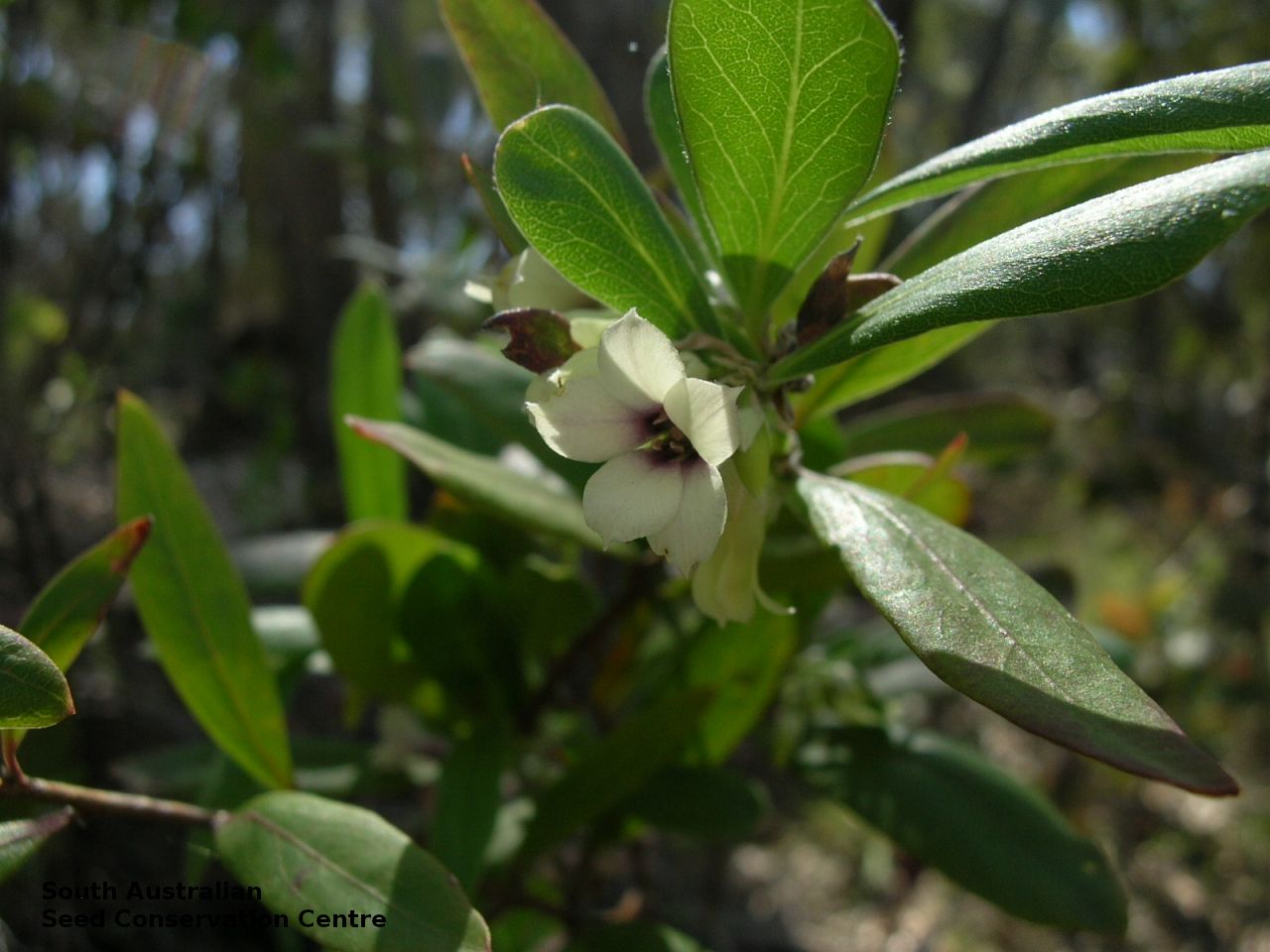
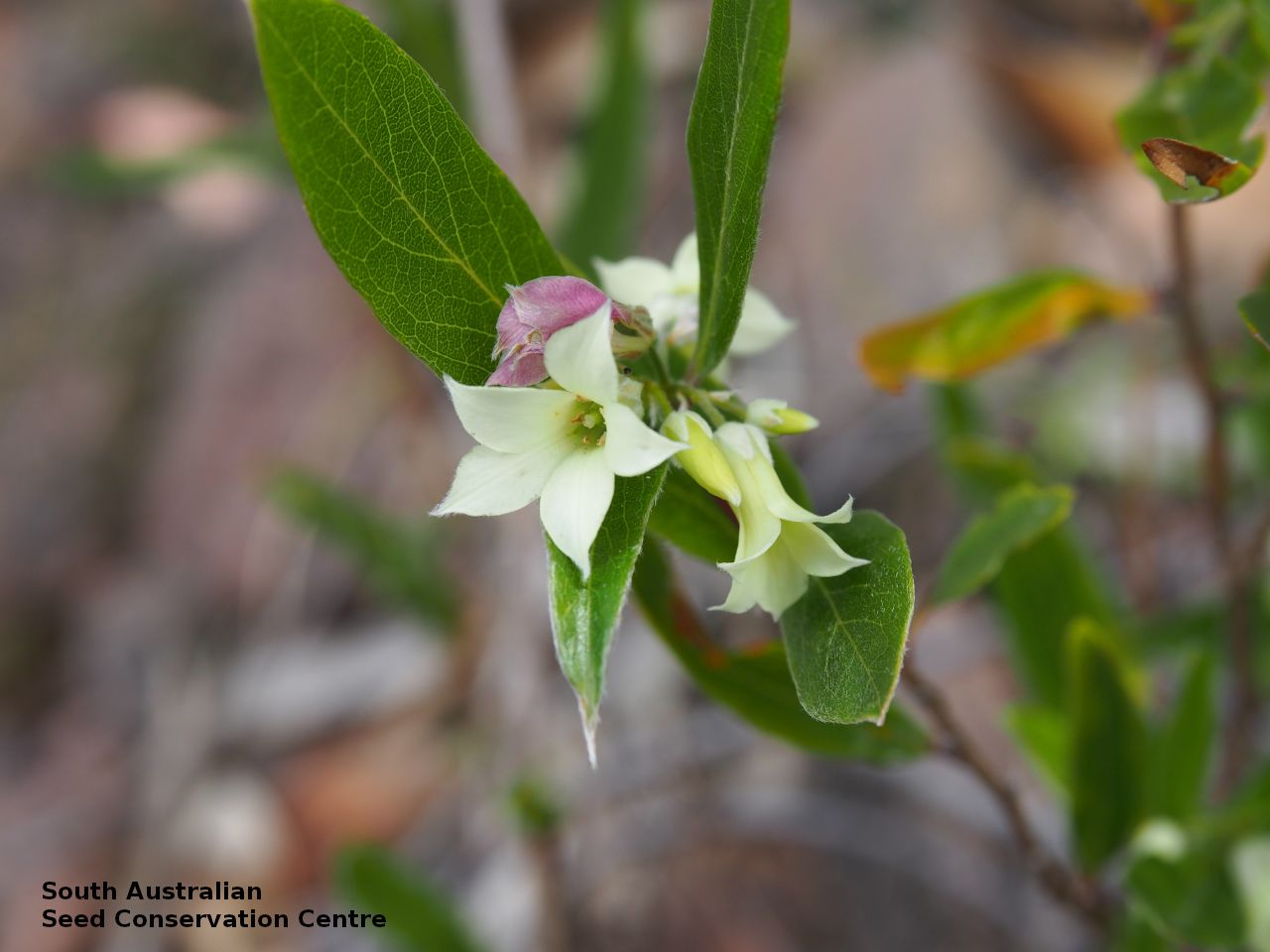
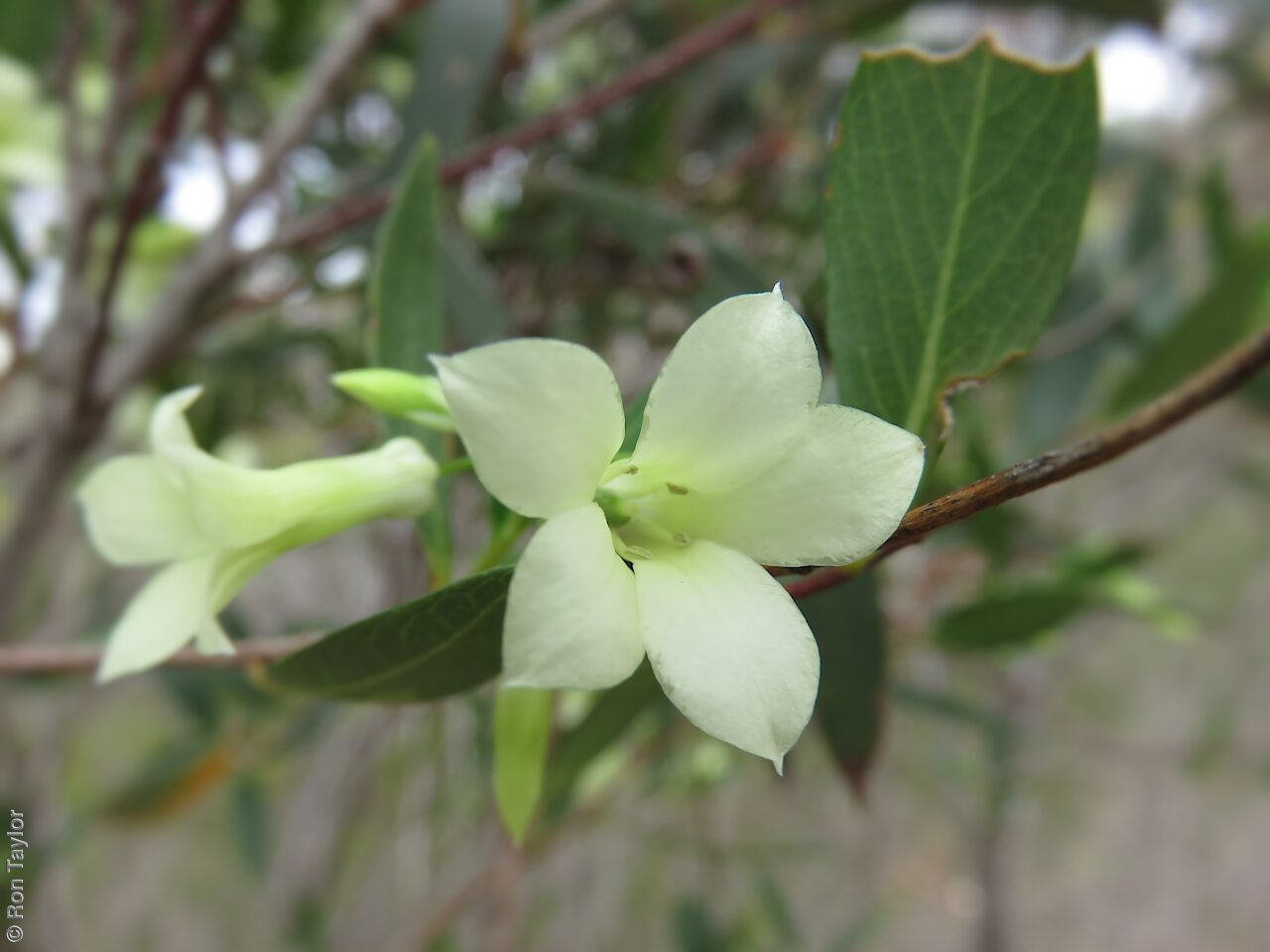
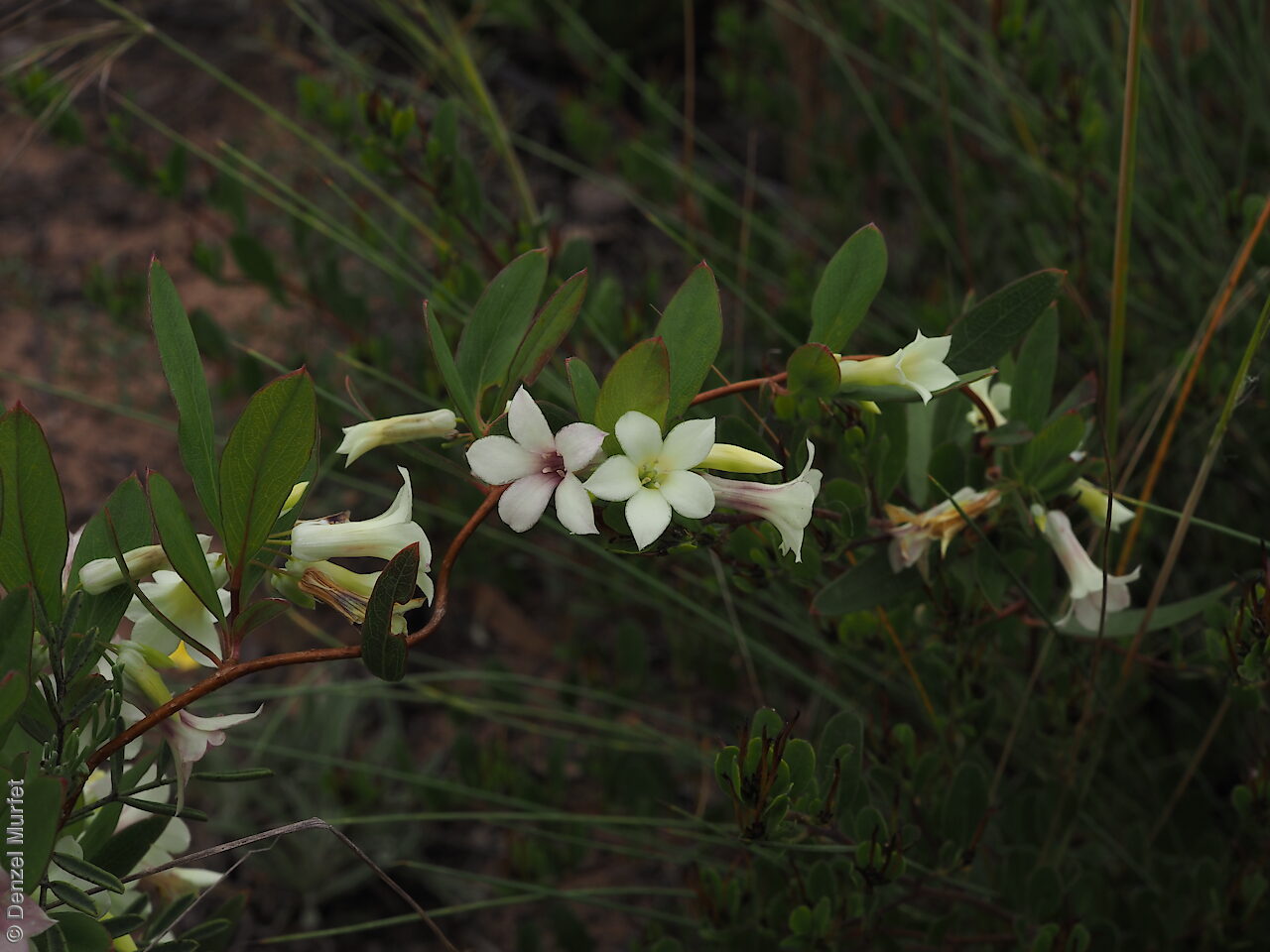

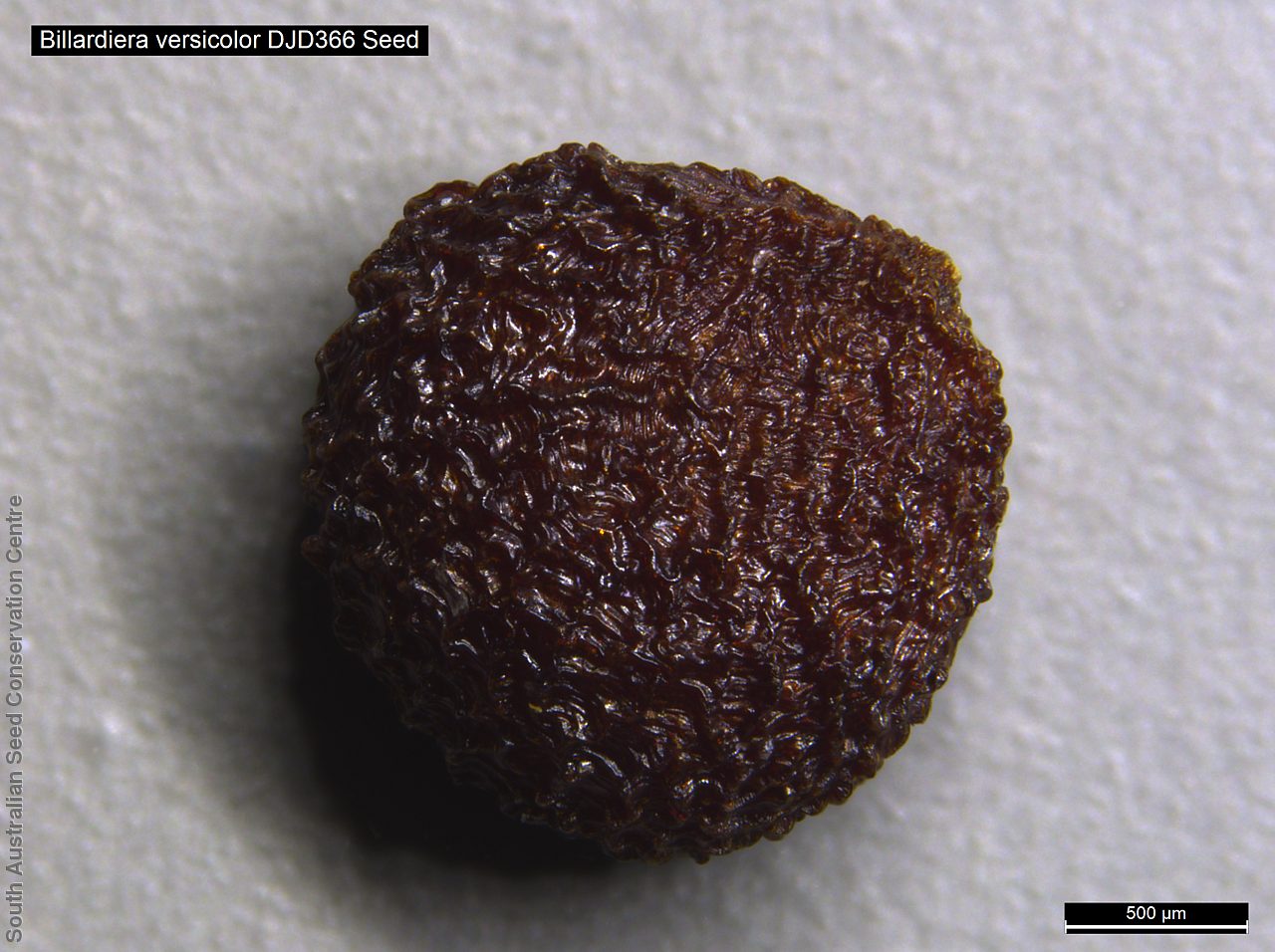
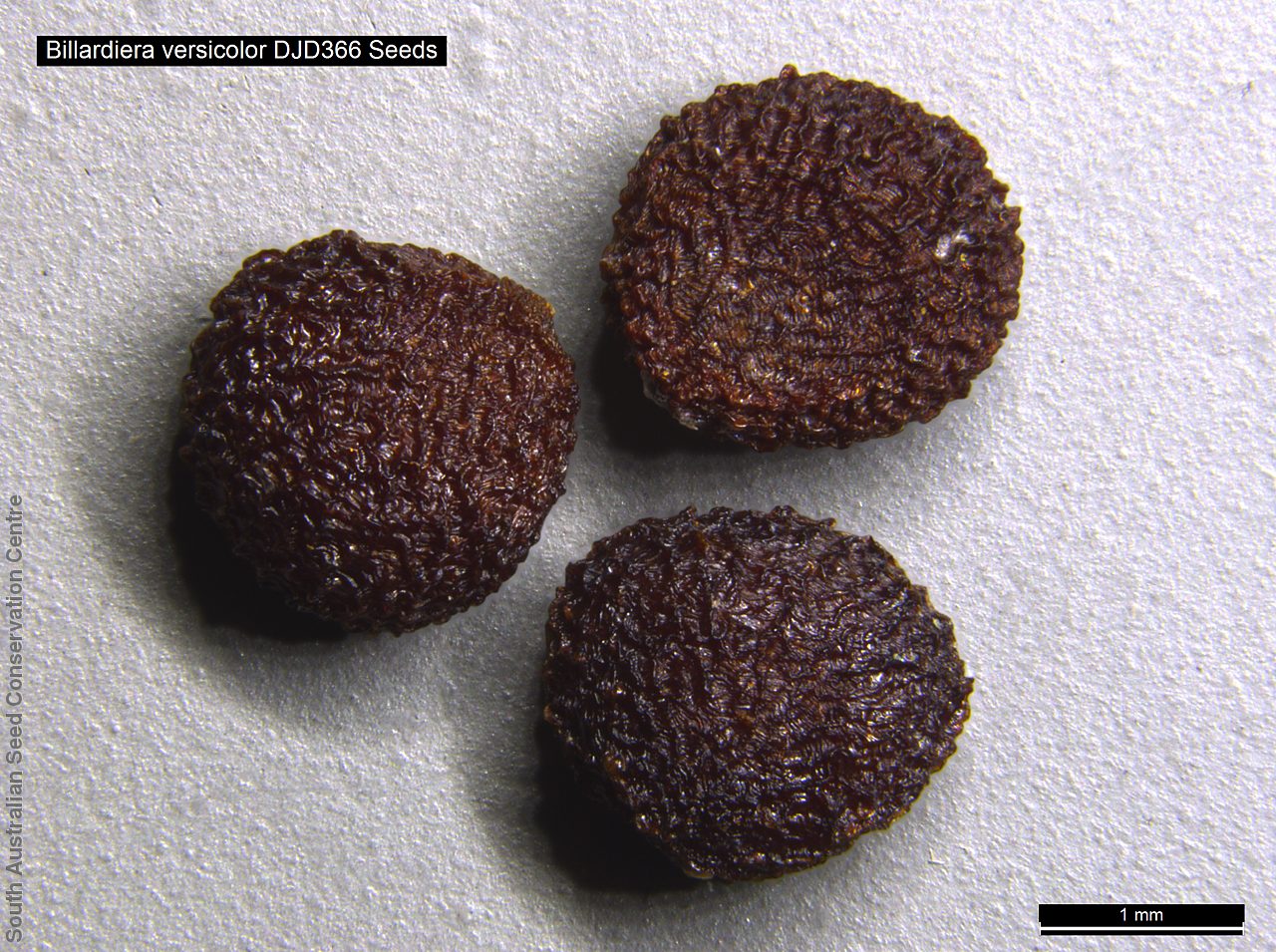

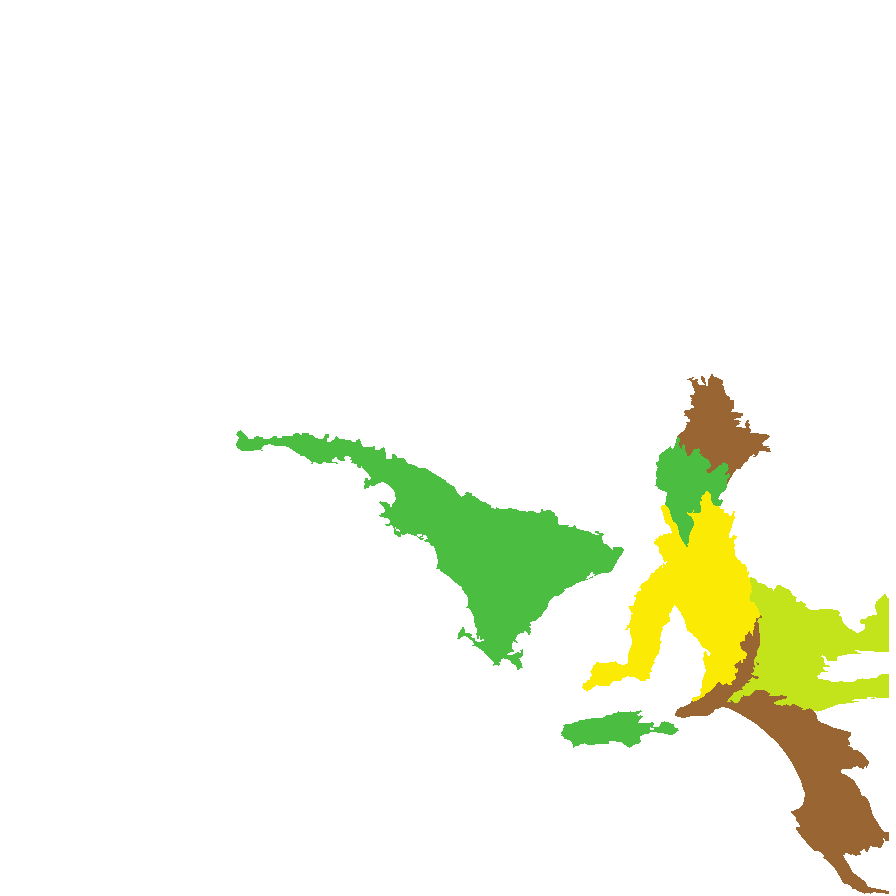
Botanical art
Prior names
Pronaya muelleriana
Common names
Pale Apple-berry
Yellow-flower Apple-berry
Etymology
Billardiera named after Jacques Julien de La Billardiere (1755-1834), a 19th century French botanist who visited Western Australia and Tasmania with D'Entrecasteaux expedition and named many new plant species. Versicolor from Latin meaning with various colour, referring to the changing colour as the flower aged.
Distribution and status
Found in the southern part of South Australia from the Flinders Ranges to the upper South-east, growing on deep sands, sandy loams and shallow or stony soils, in mallee and drier woodland and scrub. Also found in New South Wales and Victoria. Native. Common in South Australia. Common in the other states.
Herbarium regions: Flinders Ranges, Eyre Peninsula, Northern Lofty, Murray, Yorke Peninsula, Southern Lofty, Kangaroo Island, South Eastern, Green Adelaide
NRM regions: Adelaide and Mount Lofty Ranges, Eyre Peninsula, Kangaroo Island, Northern and Yorke, South Australian Arid Lands, South Australian Murray-Darling Basin, South East
AVH map: SA distribution map (external link)
Plant description
Twining perennial shrub with stems to a few metres long. Leaves lanceolate to 62 mm long and 17 mm wide, upper surface glabrous, lower surface sparsely pilose. Flowers initially white, cream-coloured or pale yellow, with spreading mauve-red blotches from throat with age, bell-shaped appearing in September to December. Fruits are cylindrical berry to 25 mm long and 8 mm wide, green and hard when immature and soft when ripe. Seeds are dark brown, flat, reniform to 2 mm long and 2 mm wide, covered in deep wrinkles. Seed embryo type is linear underdeveloped.
Seed collection and propagation
Collect seeds between January and March. Pick mature fruits by hand, those that are soft or have brown seeds inside. Clean ripe fruits as soon as possible as it will go hard if left to dry too long. Rub the fruits in water with your hands to dislodge the seeds from the fruit. Pour the mixture into a sieve to separate the seeds from the flesh. Place the wet seeds in a tray lined with paper and leave to dry for 1 to 2 days. Store the seeds with a desiccant such as dried silica beads or dry rice, in an air tight container in a cool and dry place. Seed viability is usually high. This species has physiological dormancy that need to be overcome for the seed to germinate.
| Location | No. of seeds (weight grams) | Number of plants | Date collected | Collection number Collection location | Date stored | % Viability | Storage temperature |
|---|---|---|---|---|---|---|---|
| BGA MSB | 3,000 (7.7 g) 1,900 (3.91 g) | 6 | 21-Jan-2006 | DJD366 Southern Lofty | 10-Aug-2006 | 95% | -18°C |
| BGA | 250 (0.4 g) | 10 | 17-Jan-2007 | TST59 Flinders Ranges | 1-Aug-2007 | 100% | -18°C |
| BGA | 2,650 (3.74 g) | 6 | 20-Mar-2007 | RLT1153 Southern Lofty | 1-Aug-2007 | 100% | -18°C |
Number of plants: This is the number of plants from which the seeds were collected.
Collection location: The Herbarium of South Australia's region name.
% Viability: Percentage of filled healthy seeds determined by a cut test or x-ray.